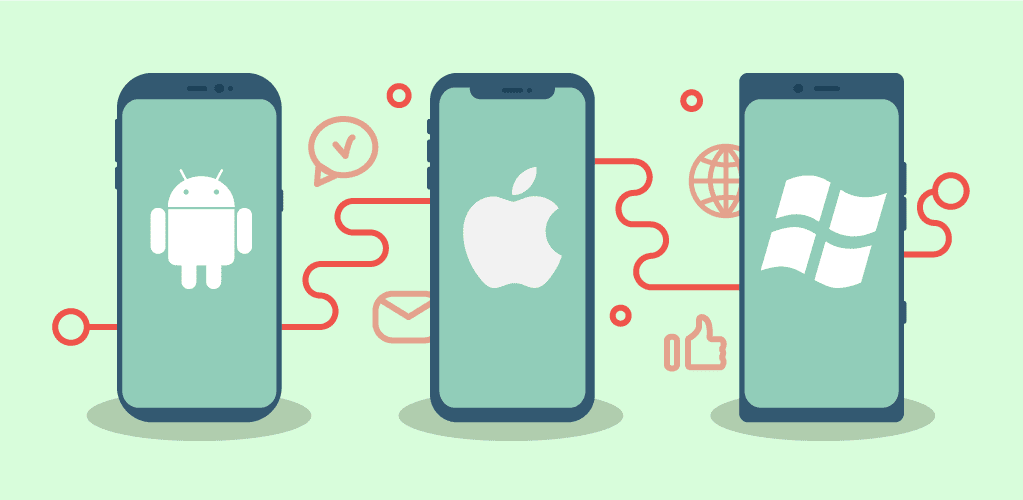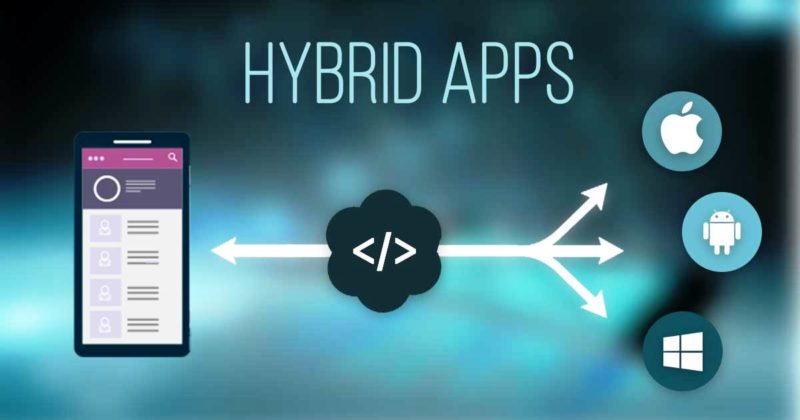Apple’s trademark There’s an app for that may sound cheesy, but there is some truth to that. Brands are regularly launching new mobile apps to support their business and grow their online presence. And the app market is booming in 2020, and mobile apps will generate a whopping $188.9 billion, a Statista report forecasts.
Built with your core business goals in mind, a custom mobile app can help you drive customer engagement, increase loyalty and fire up your revenue engines. Mobile application development is not an easy endeavor, but it doesn’t have to be an uphill battle if you act smart and make informed decisions.
(Comparison) Native or Hybrid: Which Mobile App Do You Need?
One of such decisions is your approach to developing your app. The choice is usually between native and hybrid, with each path having pros and cons. But before we start comparing those approaches in more detail, let’s revise the basics.
Native Apps
Native apps are written for a target mobile operating system with the specific OS-compatible programming languages Java for Android, Swift or Objective-C for iOS. These apps provide a best-in-class user experience and boast rich functionality as they directly access in-built device features like GPS, camera, accelerometer, and more.
A decision which platform, iOS or Android, to build your mobile app for first may require additional consideration, but statistically speaking, Android reigns supreme with 76.61% market share worldwide. And the rising number of companies favor this platform for their custom apps, which causes an increase in demand for professional Android app development services.
Hybrid Apps
Hybrid apps are a crossbreed of web and native applications. They are built with web technologies, namely Javascript, HTML, and CSS, and then packaged in a native container. This native wrapper is a special browser engine called a WebView and it allows the hybrid app to run on any mobile device. However, to access native device capabilities, a hybrid app relies on additional plugins.
An ideal app type for one business may be a disaster of a decision for another; no two businesses, even in one domain, are identical. So to get the most value out of your mobile app and see the return on your investments, take your time and evaluate your app development options against your business needs. Here’s what you should take into consideration.
Functionality:
First things first, and for a mobile app, it means its core functionality. Once you’ve decided on your app’s key features and any future capabilities that you might like to add, later on, it’s easier to choose the right app type to support your decision.
With direct access to internal device APIs, native apps can easily tap into a mobile phone’s capabilities and offer a rich and robust set of features. Hybrid apps can also leverage native device features, but they may have to rely on third-party plugins and extensions. The drawback is that these plugins may be unreliable, out-of-date, or unavailable so developers would have to build custom ones from scratch.
User Experience:
Your mobile app success hinges on one critical component, user experience (UX), and you can’t afford to overlook it. A whole 52% of users are less likely to engage with a brand if they face a poor mobile experience, meaning no recurrent purchases, recommendations or positive reviews.
Native applications ensure a superior UX for your end users. By storing content and visual elements on a mobile device, native apps are faster, more reliable, and highly performant. However, if your UI features advanced animation, smooth transitions, or immersive graphics, a hybrid app may fall short of customer expectations for smooth user experience.
App Store Approval:
Native and hybrid apps live in app stores where competition is sky high Google Play alone offers 3.8 million apps. But to get into an official application store, your mobile app first needs to be approved.
App stores are vigilant about customer experience and provide strict requirements that app publishers must comply with. While a native app usually passes the review process smoothly, hybrid app developers may face rejections if a store considers the app not particularly useful, unique, or app-like.
Budget Limitations:
When it comes to the cost of building a mobile app, there is no single price tag. Instead, the costs can vary dramatically depending on several factors: app design, functionality, supported devices and platforms, and more.
Budget-wise, hybrid apps are cheaper to develop and maintain as they use standard web technologies. Native apps built exclusively for a specific platform will be more expensive since the price will depend on the number of platforms you want to support.
Time to Market:
Hybrid apps beat their native counterparts to the market due to a faster development process. Sharing a common codebase, hybrid apps require relatively small adjustments to be deployed on different devices. The native path, however, implies separate development processes for separate platforms. In addition, obtaining an app store approval may add up to the total time to market for both native and hybrid apps.
Key takeaway:
When it comes to choosing an app type, there is no one-size-fits-all solution. Hybrid apps might be more budget-friendly and will get you to the market quicker, but if your focus is on superior user experience and performance, you may want to consider going native.
About the Author –
Olga Ezzheva is a technology writer at Oxagile, providing software engineering and IT consulting services. You can reach Olga at [email protected] or connect via LinkedIn.













![[Buy Now] Jumper EZpad 6 Plus Review 2 in 1 Tablet PC “Offer” Price (Buying Guide) Jumper EZpad 6 Plus](https://www.techinpost.com/wp-content/uploads/2017/12/Jumper-EZpad-6-plus-2-in-1-tablet-11-6-FHD-IPS-Screen-Intel-apollo-lake-324x235.jpg)
